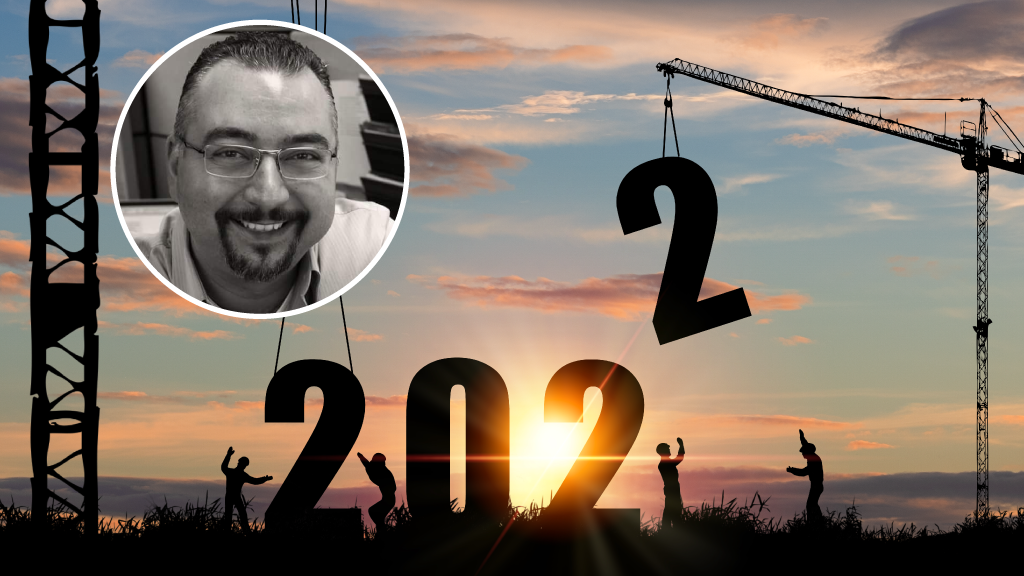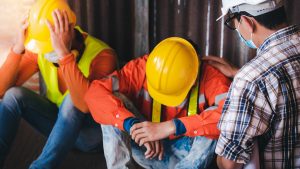Soaring material costs, supply chain bottlenecks and tightened labour markets — in any given year those three issues swirling together would test the mettle of North American construction to panicking degrees.
Now, tack on a global pandemic as both the driver and backdrop for all three issues and the industry’s slowly nurtured COVID-19 construction confidence and cadence, found by the end of 2020, was knocked off rhythm throughout 2021.
2020 was a year of shock and awe as COVID-19 surged and entrenched itself as a global pandemic. Keeping ourselves, our loved ones, our friends and colleagues alive and healthy became top priority. Keeping construction rolling…keeping the women and men in construction safe so this industry could continue to be the backbone to so many other industries required a lot of trial and error and patience…so…much…patience.
At the start of 2021 construction knew how to keep operating under public health orders, how to test onsite, how best to manage the vaccinated versus non-vaccinated debate. However, as the year rolled on, the creep of the soaring material costs, supply chain bottlenecks and tight labour markets, which had been fully identified by mid-2020, had picked up momentum in 2021.
According to a JLL Canada report, the cost of non-residential construction projects had risen by 8.3 per cent from 2020 to 2021 and in residential construction that increase soared a staggering 20.3 per cent.
Manufacturing plant shutdowns in 2020, particularly lumber mills, resulted in massive knock-on effects for construction in 2021.
Supply chains dropped from overdrive to first gear and even into park at some point. The impact? Longer wait times for goods, increased costs or both in some instances.
The Western Lumber Retail Association reported a typical lumber load from B.C. to Toronto would cost $4,500 but that climbed to $12,000 in 2021. Also, that increase was not just driven because of material prices and supply chain issues, there were also less truckers to drive the shipments or less labour to load and unload them.
This tightened labour scenario also played out in shipping where the average Pacific Ocean crossing took 73 days from port to port instead of the average 20 to 30 days.
North America has seen the price of softwood lumber decrease this year but construction materials such as steel, gypsum, glass, aluminum, copper and hardwood lumber increased. At one point, the higher lumber prices were adding $30,000 on average to the price of a new home.
Alex Carrick, ��������Connect’s chief economist, noted at the pandemic’s outset contractors absorbed material price increases in order to survive and not lose projects. However, recently, they have started to raise their prices instead.
“We’re undergoing a shift to a more expensive world, with everything costing more, and that includes labour,” said Carrick. “We’re in for a period of high prices. That trend will continue into 2022 and beyond.”
With the Omicron wave upon us it likely does feel like we are back at the start of this mind numbing, time suspending and intense time in our lives.
What does 2022 hold? What will construction build upon from 2021?
From our vantage points, as the publications of record for Canadian construction through the Daily Commercial News (DCN) and the Journal of Commerce (JOC), and our award-winning construction industry leading podcast The ��������ion Record, there were beachheads in 2021 for the industry to build from. I’ll focus on just one, because whether you are in construction or not, it is an issue that touches many of us.
Through our national multimedia feature series Cracks in the Foundation: Mental Health, Substance Abuse and ��������ion, we learned about the survivors, warriors and advocates among North American construction ranks trying to help the quiet legions of workers battling substance use or mental health issues.
During a time of tightening labour numbers continent-wide, besides helping your fellow human being the humane thing to do, it also makes smart business sense. There are companies, non-profit associations and programs making a difference and the pandemic has cast a light on the nuanced and dark spectre mental health can be.
2022 can be the year even deeper inroads are made in construction’s silent pandemic of opioid use and mental health. Besides building amazing skyscrapers, infrastructure and communities, construction can be an even better builder of the people it relies on to get the job done.
From all of us here at the DCN, JOC and The ��������ion Record news team, all the best to you and your loved ones in 2022. Stay safe.








Recent Comments
comments for this post are closed